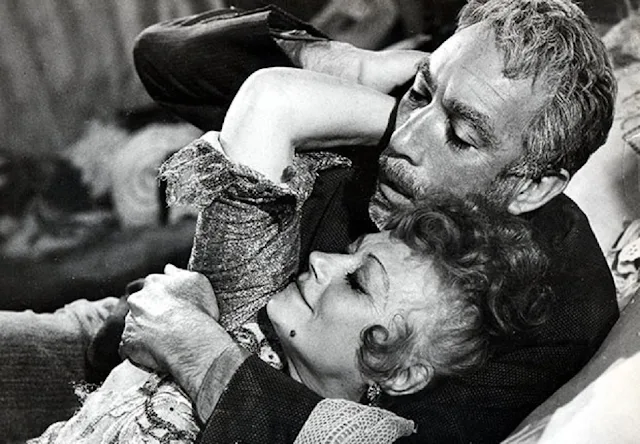 |
| Ronny Cox, Jon Voight, Ned Beatty, and Burt Reynolds in Deliverance |
Lewis: Burt Reynolds
Bobby: Ned Beatty
Drew: Ronny Cox
Old Man: Ed Ramey
Lonnie: Billy Redden
First Griner: Seamon Glass
Second Griner: Randall Deal
Mountain Man: Bill McKinney
Toothless Man: Herbert "Cowboy" Coward
Sheriff Bullard: James Dickey
Director: John Boorman
Screenplay: James Dickey
Based on a novel by James Dickey
Cinematography: Vilmos Zsigmond
Art direction: Fred Harpman
Film editing: Tom Priestley
I haven't read James Dickey's novel Deliverance, but I think I can see why Dickey grew so angry at director John Boorman's revisions on his screenplay version of the book. The film never quite decides what it wants to be: an adventure story, an environmental fable, or a story about a clash between cultures. It works best as an adventure story, which is in the nature of film, and somewhat as a clash of cultures. The four suburban hotshots who arrive in the backwoods of northern George for a weekend adventure are from the outset rude and condescending to the people who live there year-round, and of course they get their comeuppance in extreme ways. The irony is that the one man in their company who sympathizes with the locals is the one who fails to survive: Drew brought along a guitar, not the bows and arrows that Ed and Lewis bring with them, and he interacts musically with one of the supposedly "inbred hillbillies" in the celebrated "Dueling Banjos" sequence. Drew is also the only one who tries to hold out for facing justice after Lewis kills one of the mountain men who attack them. Lewis argues that if they stood trial for killing the man, they'd face a jury of the man's peers; Bobby doesn't want the story of his being raped to get out, and Ed passively goes along with them. Better backgrounding on the four adventurers might have given more substance to their characters and their ideas, and the villainous mountain men are monsters out of nightmares rather than actual human beings, so the debate over justice seems a little out of focus. But it's mostly the environmental issue that falls by the way: There's little sympathy shown for the people who face seeing their homes flooded -- one of them even says it's the "best thing that ever happened to this town" -- an almost no feeling for the wilderness that will be sunk beneath the man-made lake. Boorman would later make The Emerald Forest (1985), a more environmentally conscious film also about the construction of a dam, set in the Brazilian rain forest.









